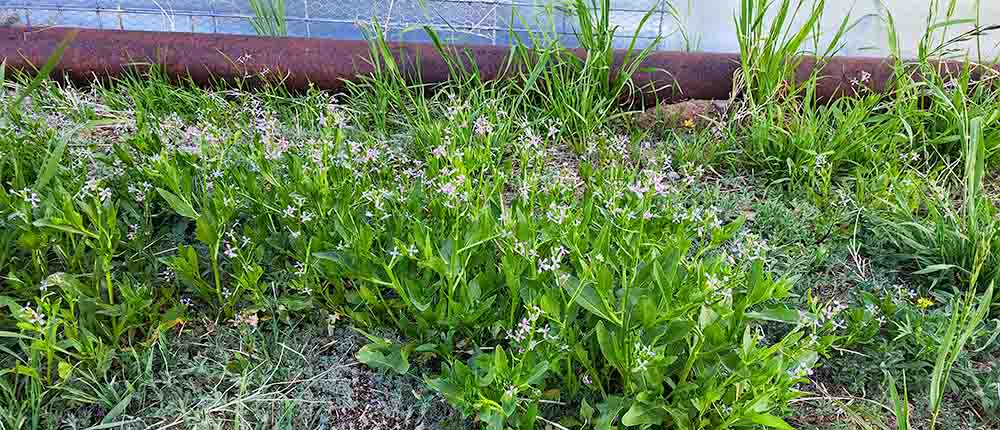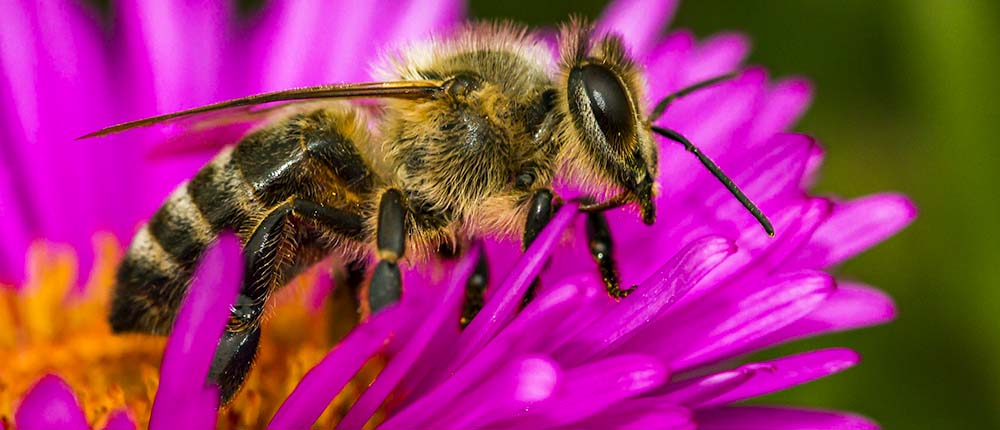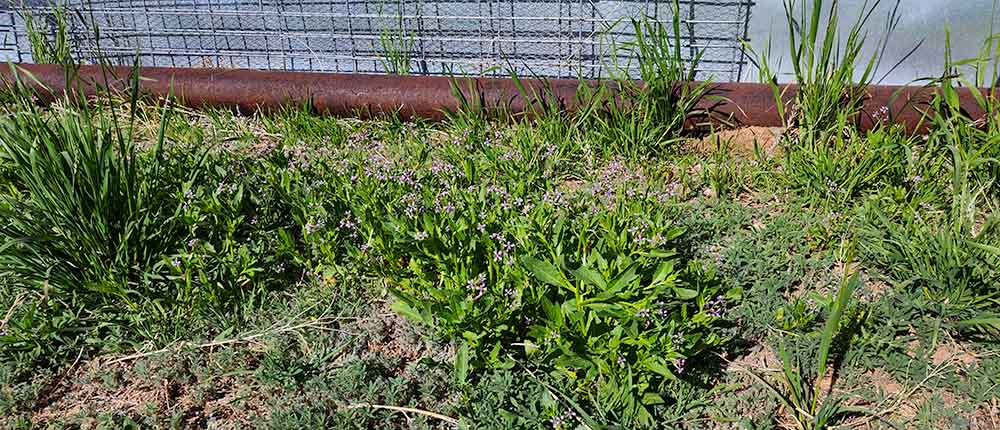Homemade Weed Killers
Are Social Media Recipes Safe and Effective?
Countless social media posts feature recipe variations for homemade weed killers, touting the miraculous powers of a simple mix of everyday household ingredients like dish soap, vinegar (or acetic acid), and Epsom salts.
This homemade weed killer recipe sounds enticing—a cheap, effortless, seemingly natural, and instant way to banish weeds from your garden using ingredients right from your kitchen and a spray bottle. With claims of being both “environmentally friendly” and more effective than store-bought herbicides, it’s easy to see why they gain so much traction.
However, before you rush to the kitchen, it’s important to ask: Do these DIY weedkillers actually work, and are they as safe as they seem?
Before you start spraying, let’s separate fact from fiction so you don’t cause more harm than good!
The truth is, while well-intentioned, these popular homemade herbicides often fall short of their promises. They may temporarily damage some weeds, but the underlying problems persist – you haven’t changed why the weed is there. Worse yet, they can have unintended negative consequences for your garden’s overall health, harming beneficial insects and disrupting delicate soil ecosystems.
What You’ll Learn
We’ll explore weed control, why DIY solutions often fail, and the hidden dangers they pose. We’ll also show you more effective, sustainable approaches to weed management for your garden.
But first, let’s get clear on some basics:
- What’s a weed? Any plant growing where you don’t want it! Whether an invasive species or a simply misplaced volunteer, a weed competes with your desirable plants for resources.
- What’s an herbicide? An herbicide is a substance designed to kill or control unwanted plants (aka weeds). They can be chemical or organic in origin.
We’ll explore the ingredients commonly found in DIY weed killers, revealing their strengths and (mostly) weaknesses. We’ll discuss where and how to apply them (spoiler alert: with caution!), and most importantly, we’ll explore safer, more effective alternatives to help you achieve a thriving garden that’s not struggling with weeds.
Let’s get started!
Why Your Kitchen Pantry Isn’t a Weed Control Arsenal
Let’s take a closer look at the ingredients in this popular DIY weed killer recipe to understand why it often fails to deliver lasting results.
Dish Soap vs. Detergent
A Double Whammy for Soil Health
The ineffectiveness of liquid dish soap in homemade weed killers goes beyond its inability to target plant structures. Both dish soap and laundry detergent can disrupt the delicate balance of soil life, even at diluted concentrations. While they share some similarities, there are key differences in their impact:
- Dish soap is formulated to cut grease and grime. It contains surfactants – molecules that lower the surface tension of water – allowing it to break down grease and dirt. Unfortunately, these surfactants are indiscriminate and can disrupt the membranes of beneficial soil organisms like bacteria, fungi, and nematodes. These organisms are crucial in nutrient cycling, decomposition, and plant root health. Their disruption hinders nutrient uptake for your desired plants and weakens the overall soil ecosystem.
- Laundry Detergent often contains additional ingredients beyond surfactants, such as phosphates, builders, and brighteners. While some modern detergents are moving away from phosphates, these were historically a major concern. Phosphates can act as a nutrient source for algae, leading to blooms that disrupt the delicate balance in ponds or waterways if the DIY weed-killer solution ends up there. Builders, which help soften water and improve cleaning performance, can alter soil pH and hinder plant nutrient availability. Brighteners, often fluorescent dyes, may not directly impact soil organisms, but their long-term environmental effects are still being studied.
In essence, dish soap and detergent disrupt the natural biological processes in the soil.
Vinegar & Epsom Salts
A Recipe for Weed Success… and Soil Trouble
- Vinegar (Household or Horticultural) – Household vinegar, known as acetic acid, has low acidity (5-10%), and is generally ineffective as a long-term weed control solution. It primarily damages the foliage, leaving tougher weeds relatively unharmed. Some recipes might call for horticultural vinegar (20-30% acidity). While more potent, it’s highly corrosive and poses serious risks, including skin burns, severe eye damage, and lung irritation from fumes. Because it’s an acid, it drastically changes your soil pH, harming beneficial microorganisms that support healthy plant growth.
- Epsom Salts – A source of magnesium, a nutrient that supports plant growth. Including them in a DIY weedkiller may inadvertently fertilize your weeds!
Unintended Consequences
When DIY Weed Control Backfires
When thinking about fighting weeds with homemade recipes, it’s important to remember that the effects spread beyond the target weeds. These solutions often become weapons of mass destruction in your garden, causing unintended harm to the elements supporting a healthy ecosystem.
Collateral Damage to Beneficial Insects
Dish soap, a key ingredient in many homemade weed killers, doesn’t distinguish between the weeds you want to eliminate and the crucial players in your garden’s ecosystem. While it might dehydrate weeds, it also harms or eliminates beneficial insects like pollinators – bees and butterflies – and those who naturally fight garden pests like ladybugs and lacewings. Losing these allies leads to ripple effects such as increased pest problems, lower yields, and a less healthy garden overall.
Disrupting the Soil Ecosystem
The foundation of a thriving garden beneath our feet is teeming with life—bacteria, fungi, and beneficial organisms crucial for plant health. They break down organic matter, cycle nutrients, and protect plants from disease while improving soil structure.
Dish soap, vinegar, and even Epsom salts can disrupt this delicate balance. Over time, this disruption degrades soil health, making it harder for your desired plants to thrive. This highlights the importance of looking beyond quick-fix solutions.
Choosing targeted, science-backed weed control methods helps protect the hardworking helpers in your garden and promotes long-term, sustainable results.
How Organic Herbicides Work
and Why They’re Different
Most commercially available organic herbicides work very differently from synthetic herbicides like glyphosate. Understanding how they operate is key to using them effectively and safely.
- Contact Killers – Organic herbicides primarily act on contact, directly damaging the plant tissue on which they are sprayed. This leads to rapid browning or “burn down” of the foliage. Thorough coverage of the weed is crucial for quick results. However, since they don’t penetrate deeply into the plant, roots often remain unharmed, requiring repeated applications for tougher weeds. Weed growth often seems unaffected.
- Non-Selective Action – Organic herbicides are non-selective, meaning they don’t differentiate between desirable plants or flowers and invasive weeds. This makes careful, targeted application absolutely essential to avoid harming the plants you want to keep.
- Different than Glyphosate – Glyphosate is the active ingredient in Roundup, a group of systemic commercial herbicides. This means the plant absorbs it and travels throughout its system, killing it by disrupting vital internal processes.
Knowing organic herbicides’ limitations and how they work helps you set realistic expectations and use them effectively, minimizing unintended damage to your garden.
Weed Control the Natural Way
Proven Strategies for a Healthy Garden
Frustrated with ineffective DIY homemade weed killers and worried about their impact on your garden? There are safer and more effective ways to keep weeds in check. Here are some proven strategies:
- Crop Rotations – Don’t let weeds get complacent! Rotating different plant families (like leafy greens, root crops, and fruiting vegetables) in your garden beds each season disrupts the lifecycles of specific weeds (and pest insects), reducing their chance of becoming a recurring problem.
- Cover Crops – Think of them as your garden’s green armor. Cover crops like crimson clover, buckwheat, or rye outcompete weeds for sunlight, water, and nutrients, suppressing their growth. Plus, they act like a natural fertilizer boost when cut down at the soil level to become mulch! Choose different cover crops for spring and fall plantings to maximize the benefits. For instance, spring-planted cereal oats and buckwheat build soil structure and suppress weeds before summer vegetables. In contrast, fall-planted cereal rye adds nutrients and prevents erosion over the colder months.
- Boost Effectiveness with a Mix – Planting a multi-species mix of cover crops is even more effective than a single type. Different plants offer a range of advantages—some fix nitrogen, some have deep tap roots that break up compacted soil, and others attract beneficial insects. This diversity brings a wider range of benefits to your garden!
See just how effective a cover crop mix is against bindweed in Controlling Bindweed in the Garden.
- Living Mulches – Use low-growing, spreading plants between crop rows to create a living blanket that smothers weeds. Creeping thyme, Crimson clover, borage, chamomile, Miner’s lettuce, nasturtiums, and certain ornamental groundcovers make excellent choices.
- Stale or Spent Seed Beds – Trick weeds into an early appearance! Prepare your seedbed as usual, encouraging weed seeds to germinate and grow for 3-7 days. Then, lightly hoe or cultivate just under the top layer of soil to slice off those newly sprouted weeds. Repeat one more time to reduce your weed pressures by up to 90% for the current season.
- Organic Mulches – Wood chips, straw, and shredded leaves are natural materials that are win-win. They block light, preventing weed seeds from sprouting and gradually decompose, enriching your soil.
- Weed Barriers and Tarps – Consider landscape fabric or opaque tarps for established areas struggling with persistent weeds or when preparing new beds. Spread over the soil, they block sunlight and smother existing weeds. Cardboard can provide a similar short-term effect.
- Prevent Seed Spread – This is one of the simplest yet most effective strategies! Cut and remove weed flowers – or remove weeds entirely – before they set seed to significantly curb the weed population for future seasons. The effects aren’t as dramatic as the spent seedbed method, but you’ll notice a significant reduction of weeds appearing after a couple of seasons.
Shifting your focus to these methods promotes long-term weed control while building healthier, more resilient soil – a true win for your garden!
Key Takeaways
Remember, homemade and organic herbicides act on contact and don’t discriminate between weeds and beneficial plants or soil organisms. To protect your garden’s ecosystem, it’s best to use them strategically –
- Target Specific Areas – Apply these herbicides in walkways, along fence lines, or other places where damaging desirable plants is less of a concern.
- Prioritize Natural Methods – Focus on alternative weed control methods in your garden beds. Mulching, hand-pulling, crop rotations, and cover crops offer more sustainable, soil-friendly weed suppression while improving soil fertility.
- Consider Certified Organic Options – If you prefer a pre-made organic herbicide, look for products that have been tested and certified by reputable organizations. This ensures you’re getting a solution that’s effective and aligned with your gardening principles.
Our recommendation for a pre-made organic herbicide is Arbico Organics in Tucson, AZ. They focus on beneficial soil organisms, biological pest controls, and weed control and are incredibly helpful. We’ve known them for for a long time and can’t recommend them enough!




